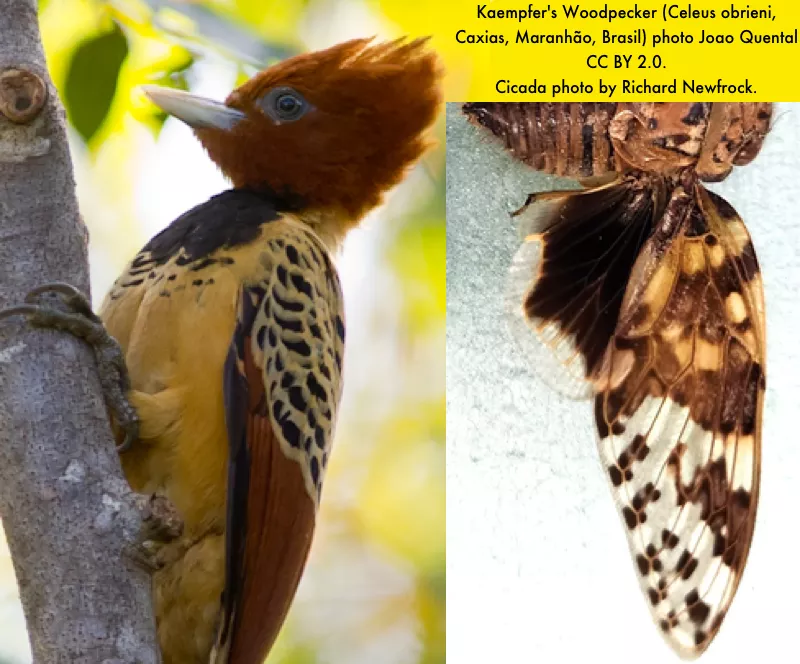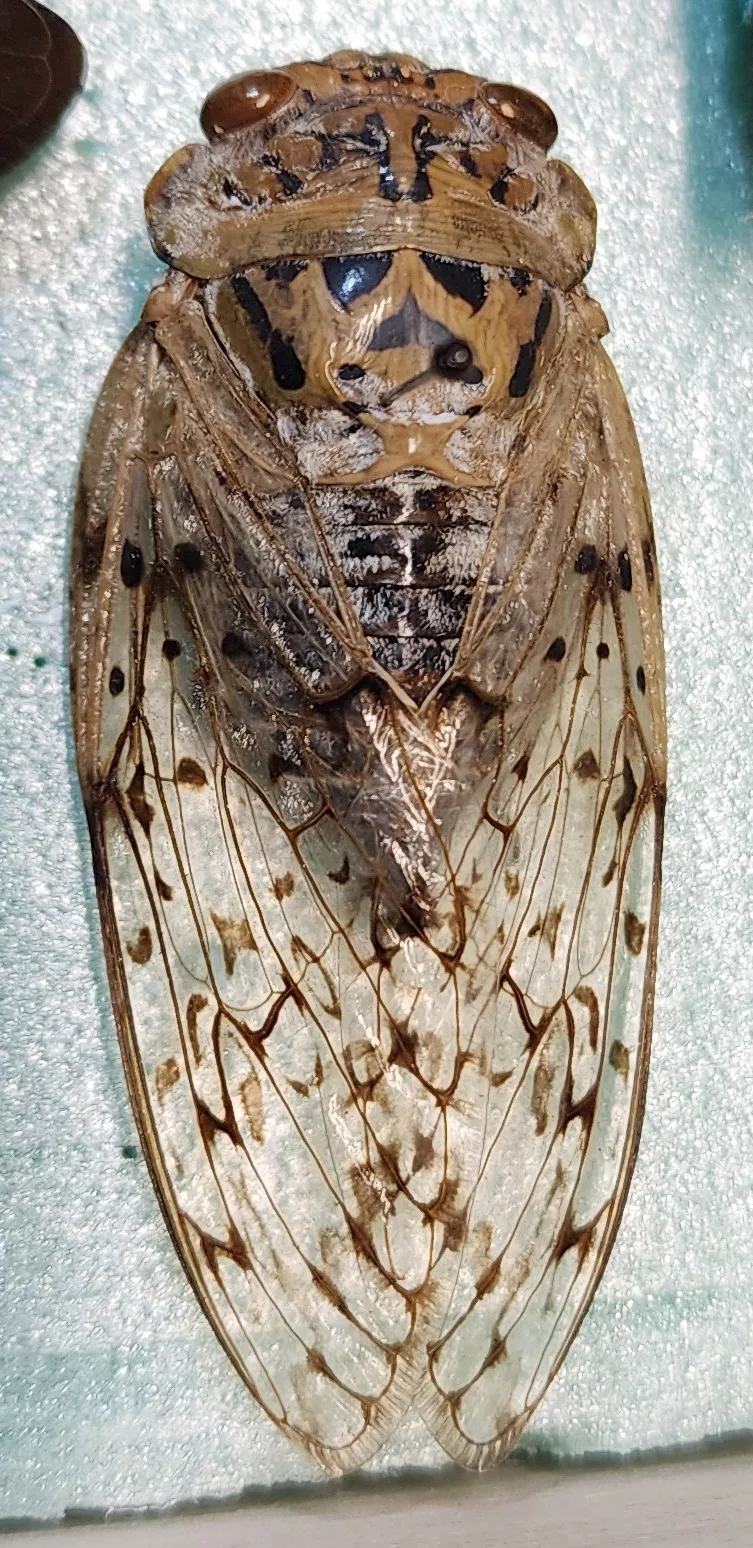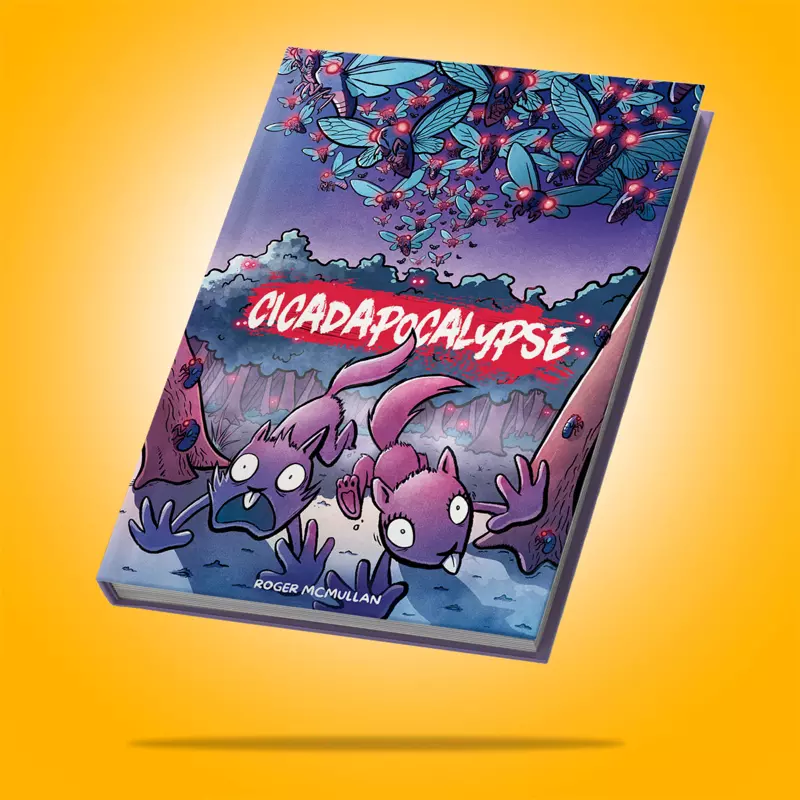CGWiber of the Dutch John Resort of Flaming Gorge Reservoir, Utah, sent us these cicada photos. CGWiber enjoys fly fishing and “matching the hatch”, which means using fly fishing lures that match the characteristics of cicadas. Cicadas are a favorite food of game fish like trout. They can have years of great abundance. You’ll find them near water because there is more vegetation near water, which is why fish get ahold of them.
Okanagana cicada. It looks like Okanagana magnifica, but I’m not sure.
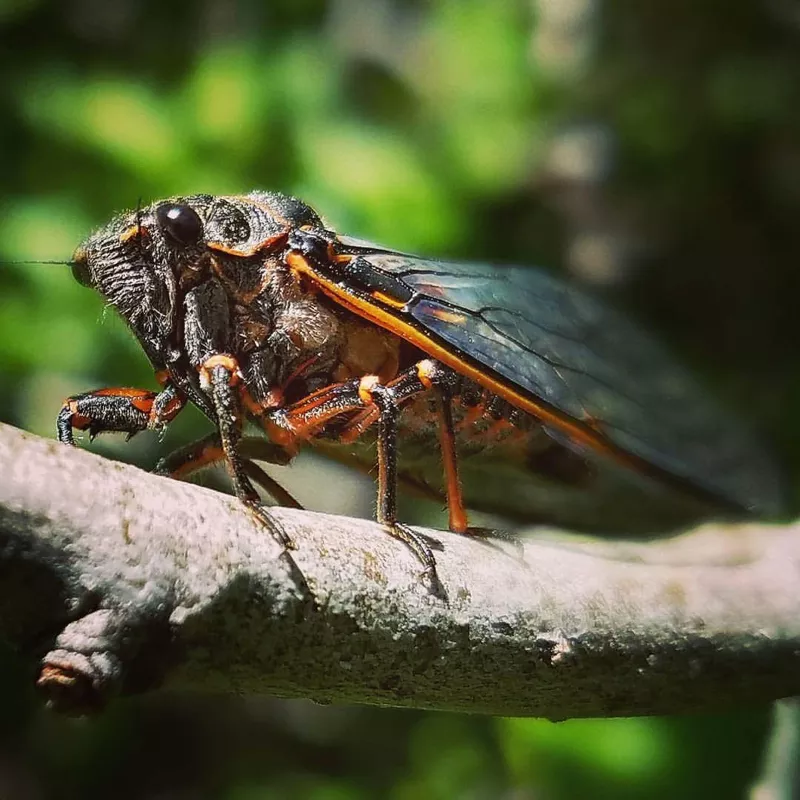
Okanagana cicada. Looks like Okanagana magnifica. It is about the length of two human phalanges:
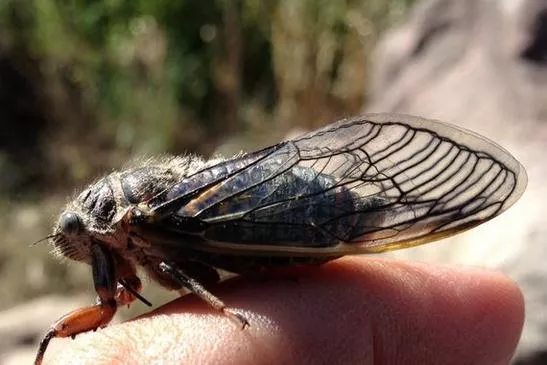
Platypedia cicada.
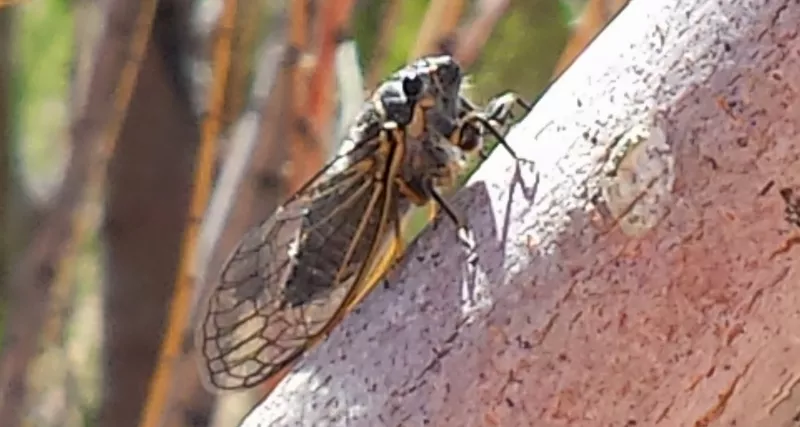
Platypedia cicada. See how tiny they can be? Smaller than one human phalanx.
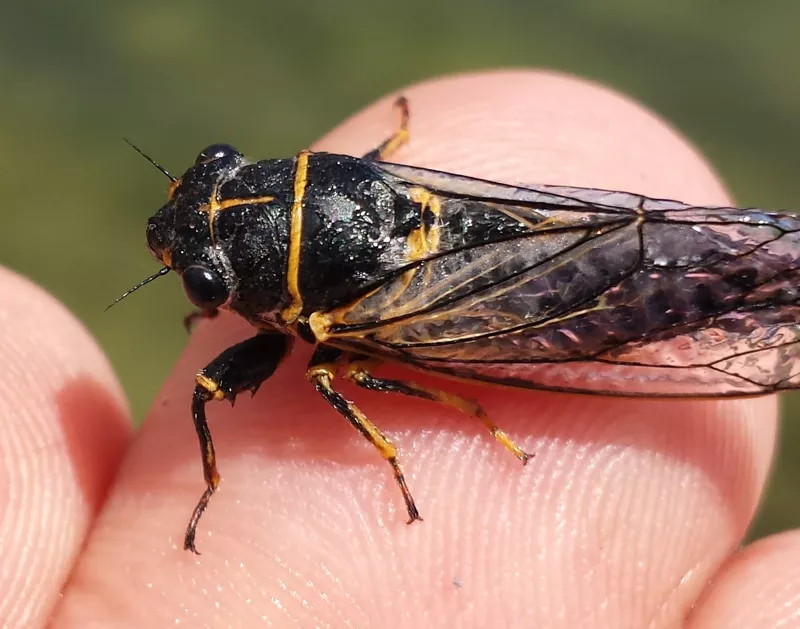
Okanagana and Platypedia are visually similar.
With few exceptions, both cicadas are primarily black with orange or beige highlights, both can be “hairy”, and both are common west of the Mississippi.
Platypedia tend to be smaller than Okanagana, many have a line down their pronotum, and they make sound by clapping their wings against their bodies. Okanagana make sound by vibrating their tymbals.
Thanks to cicada researcher Jeff Cole, Ph.D., for this tip: “From the side with the wings folded Platypedia have the node on the forewing way out towards the apex, while Okanagana and Tibicinoides will have the node located more or less in the middle of the wing.”



